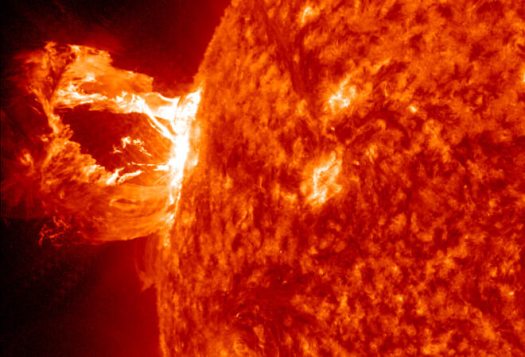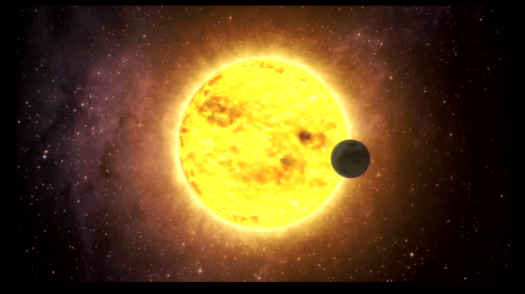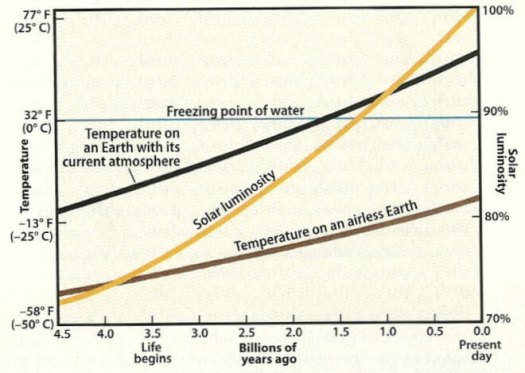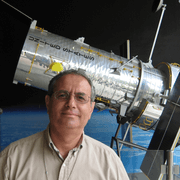
It is hardly surprising that in this burgeoning exoplanet era of ours, those hitherto unknown planets get most of the attention when it comes to exo-solar systems. What are the planet masses? Their orbits? The chemical makeup of their atmospheres? Their potential capacity to hold liquid surface water and thereby become “habitable.”
Less frequently highlighted in this exoplanet scenario are the host stars around which the planets orbit. We’ve known for a long time, after all, that there are billions and billions of stars out there, and have only known for sure that there are planets for 20 years. So the stars hosting exoplanets have largely played a background role focused on detection: Does the light curve of a star show the tiny dips that tell of a transiting planet? Does a star “wobble” every so slightly due to the gravitational forces or orbiting planets.
Gradually, however, that backseat role for stars in the exoplanet story is starting to change, especially as the key question moves from whether new exoplanets have been found to whether they hold the potential to support life.
And a growing number of scientists — and especially those specializing in stars — argue that central to that latter question are understanding the make-up and dynamics of the host stars.
Vladimir Airapetian, a research heliophysicist and astrophysicist at NASA’s Goddard Space Flight Center, has been a leader in this emphasis on the stellar side of the exoplanet story. And now, he has proposed a re-conceiving and re-naming of that area around stars where planets could potentially host liquid water and support life — the so-called “Goldilocks” or habitable zone.
His alternative: the “biogenic zone.”
“Liquid water is undeniably important for possible life on a planet, but it is not sufficient,” he told me. “I believe that equally important is the amount of energy coming from the host star.
“The last twenty years has seen a huge increase in knowledge about our own sun, and the lessons learned are now being used on exoplanet-host star systems. This is essential because without an understanding of the energy arriving at a planet from a star, it’s really impossible to assess its potential to support life.”

Airapetian made something of a splash last month with the release of a paper in Nature Geoscience that both potentially helps explain the conditions that allowed life to form on Earth (and possibly Mars), while also presenting a intriguing theory on how parallel conditions could be present on many exoplanets.
And it all has to do with the dynamics of our sun — in particular, the coronal mass ejections (CMEs), the counterparts of “super-flares” that can send vast amounts of energy out into the solar system. They are the result of huge stellar explosions of magnetic field and of plasma, the fourth form of matter in the universe. Plasma in stars is mostly made up of hydrogen and helium atoms stripped of their electrons, and consequently they are highly energetic.
So how to CMEs play into the origin of life story? Please bare with me a bit.
One of the more vexing questions about early Earth (and early Mars) is that the sun they orbited sent out measurably less energy than the sun does now, about 70 percent of today’s power. This would be consistent with the known evolution of all stars like ours, which gain strength over time.
This “faint young sun” problem greatly complicates hypotheses for how and when life began in our solar system because it seems to preclude the pooling of liquid water on Earth, and certainly Mars, for much of the early epoch. That includes the period when life is believed to have begun on Earth (somewhere between 3.5 and 3.8 billion years ago) and also the period on Mars when, thanks to the Curiosity rover, we know for sure now that water ran and pooled. Especially on more distant Mars, where few remnants of potentially warming greenhouse gases have been found, the faint young sun should have produced an absolutely frigid planet.
Actually, Carl Sagan and colleague George Muller argued the same about Earth back in the 1970s. But geological and paleontological evidence convincingly showed otherwise.

In his Nature paper, Airapetian proposes a solution, one based on valuable data collected by the Kepler Space Telescope, but little known to the public. What Kepler found was that many young stars experience “super-flares,” and they occur not infrequently.
“These huge events were detected in the optical band, and were generally most powerful on young stars,” he said. “Scaling that information gave us a sense of super-flare frequency on our young sun, and it was roughly once every ten days. These powerful flares usually come with energetic CMEs that may last for several days, so that’s a huge amount of energy hitting the early Earth.”
As a result, the star’s overall radiation output might be significantly lower than it would be as an older star, but these extraordinary bursts of energy could serve as both a source of consistent warming and could start a chemical cascade that would produce a lesser known but powerful greenhouse gas, nitrous oxide.
Not only would the regularity of the super-flares potentially keep a planet like early Earth warm enough to be wet, but their great energy could spark and set into motion other chemical processes that could, or would, produce some of the chemical building blocks of life. In a planet scattered evenly with simple molecules, as Earth was in its early days, it would take a huge amount of incoming energy to create the complex molecules such as RNA and DNA that eventually seeded life.
Here is a NASA video about this proposed process:
It should be noted that while the super-flare CMEs identified by Kepler could have played an important role in keeping Earth (and maybe Mars) warm and energetic enough for life to begin, they could also wreck havoc with the atmosphere of a planet, especially if its surround magnetic fields are not strong and protective. A pounding from highly-energized and magnetized stellar clouds could rip off a planet’s atmosphere if that magnetosphere is weak. A better understanding of super-flare/atmosphere dynamics would help scientists determine what kinds of stars and what kinds of planets could be hospitable for life.
William Danchi, principal investigator of the project at Goddard and a co-author on the paper, put the results into this larger context:
“We want to gather all this information together, how close a planet is to the star, how energetic the star is, how strong the planet’s magnetosphere is in order to help search for habitable planets around stars near our own and throughout the galaxy. This work includes scientists from many fields — those who study the sun, the stars, the planets, chemistry and biology. Working together we can create a robust description of what the early days of our home planet looked like – and where life might exist elsewhere.”
In keeping with this interdisciplinary approach, NASA’s Nexus for Exoplanet System Science (NExSS) initiative will hold a workshop in in New Orleans on November 29 to December 4 to delve into the star-exoplanet relationship.
Host stars have additional characteristics that can help inform the search for habitable exoplanets. For instance, metallicity — the presence of elements heavier than hydrogen and helium in the stars — determines what compounds will later be present in the proto-planetary cloud formed with the star. That cloud in turn becomes the disk that provides material for planets and needs to deliver essential components for life such as carbon, oxygen, sulfur iron, magnesium and copper.

The type and size of star is also key. More than 70 percent of the stars in our vicinity of sky are M dwarfs, stars with substantially less luminosity than a star like our sun. Airapetian said the limited energy from these stars would, in his model, make it far more difficult to form the molecules needed for life, although the presence of volcanoes on the planets would help.
While an exoplanet orbiting an M dwarf star might be in a “habitable zone,” he says, it may be entirely inhabitable because it is not in a “biogenic zone” — with the requisite water plus the radiation needed to form bio-molecules.
However, given what is known about the stages of growth of larger stars, he is quite sanguine about the possibilities for extra-solar life. Because of the widespread presence of those super-flares in the early stages of larger star formation, he said, the sparks needed to create necessary molecules for life will be commonly present and so “life should be abundant.”
